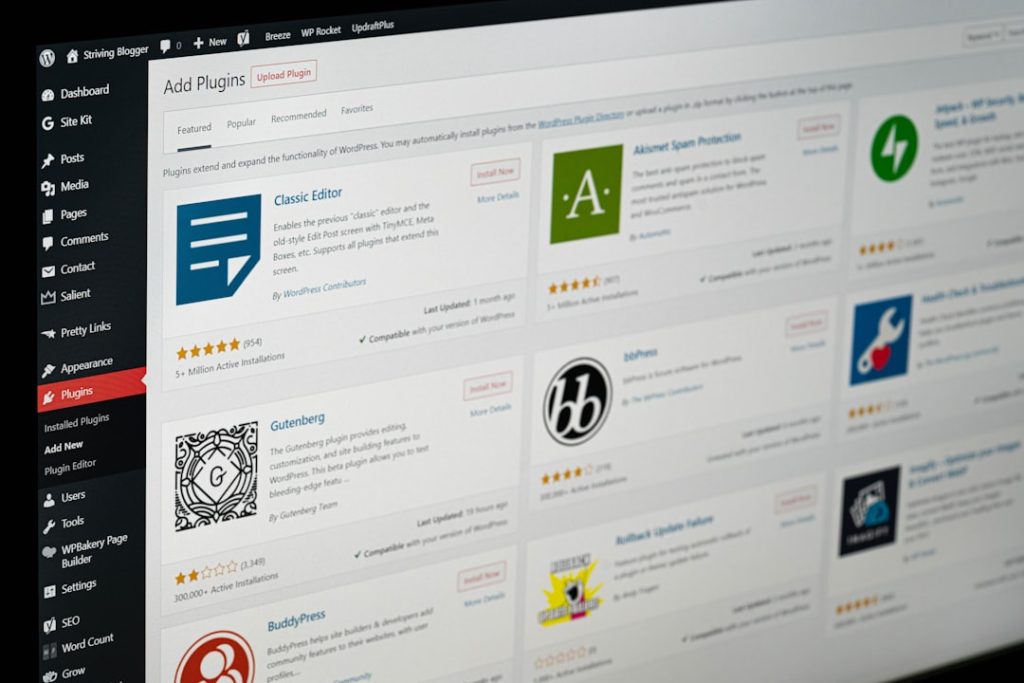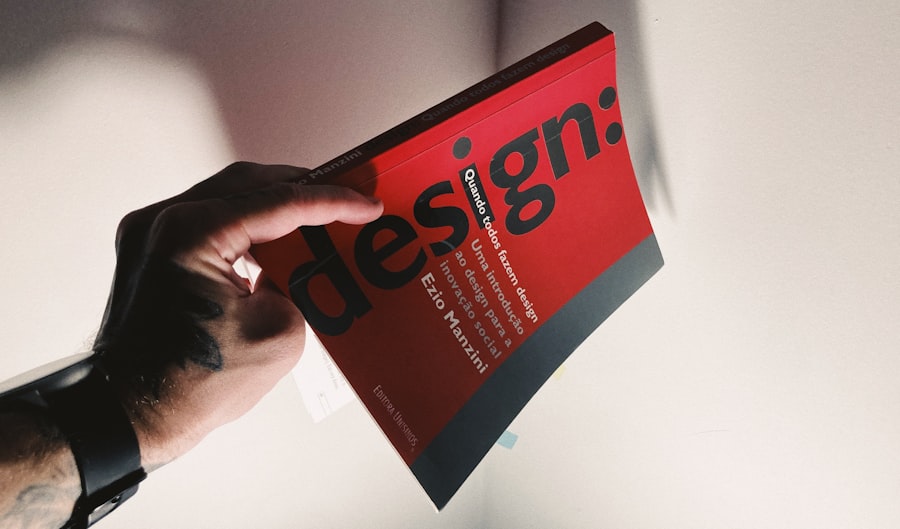In the digital age, the importance of a well-designed website cannot be overstated. Web design software plays a crucial role in the creation and maintenance of websites, enabling designers and developers to bring their visions to life. These tools range from simple drag-and-drop interfaces to complex coding environments, catering to a diverse audience with varying levels of expertise.
The right web design software can significantly enhance productivity, streamline workflows, and ultimately lead to more aesthetically pleasing and functional websites. The landscape of web design software is vast and continually evolving, with new tools emerging to meet the demands of modern web development. As businesses and individuals increasingly recognize the value of a strong online presence, the need for effective web design solutions has surged.
This article will explore some of the most popular web design software options available today, including Adobe Dreamweaver, Sketch, WordPress, Wix, Adobe XD, and Figma. Each of these tools offers unique features and capabilities that cater to different aspects of web design, from coding to prototyping and content management.
Key Takeaways
- Web design software is essential for creating and designing websites.
- Adobe Dreamweaver is a popular web design software that offers a wide range of features for both beginners and advanced users.
- Sketch is a powerful design tool specifically for creating user interfaces and web designs.
- WordPress is a widely used content management system that offers a variety of themes and plugins for web design.
- Wix is a user-friendly platform that allows users to create websites with its drag-and-drop interface.
- Adobe XD is a design tool that allows for creating prototypes and wireframes for web and mobile applications.
- Figma is a collaborative interface design tool that enables real-time collaboration and prototyping.
- When choosing web design software, consider the specific needs of the project and the level of expertise of the user.
Adobe Dreamweaver
Adobe Dreamweaver has long been a staple in the web design community, known for its robust features that cater to both beginners and experienced developers. This software provides a comprehensive environment for designing, coding, and managing websites. One of its standout features is the dual view interface, which allows users to work in both a visual design mode and a code editor simultaneously.
This flexibility enables designers to see real-time changes as they manipulate HTML, CSS, and JavaScript, making it easier to understand how code translates into visual elements. Dreamweaver also supports responsive design, allowing users to create websites that adapt seamlessly to various screen sizes. With built-in templates and starter layouts, users can quickly set up their projects without starting from scratch.
Additionally, Dreamweaver integrates with other Adobe Creative Cloud applications, such as Photoshop and Illustrator, facilitating a smooth workflow for designers who rely on multiple tools for their projects. The software’s extensive library of extensions further enhances its functionality, enabling users to add custom features tailored to their specific needs.
Sketch
Sketch has emerged as a favorite among UI/UX designers due to its focus on vector graphics and user interface design. Unlike traditional web design software that often caters to both coding and design, Sketch is primarily geared towards creating high-fidelity mockups and prototypes. Its intuitive interface allows designers to create layouts quickly using artboards, symbols, and reusable components.
This efficiency is particularly beneficial in collaborative environments where multiple designers may be working on the same project. One of Sketch’s most powerful features is its ability to create responsive designs through constraints and resizing options. Designers can define how elements should behave when the screen size changes, ensuring that their designs remain visually appealing across devices.
Furthermore, Sketch’s integration with various plugins enhances its capabilities, allowing users to incorporate features like design systems, accessibility checks, and version control into their workflow. This focus on collaboration and efficiency has made Sketch a go-to tool for many design teams looking to streamline their processes.
WordPress
WordPress is one of the most widely used content management systems (CMS) globally, powering over 40% of all websites on the internet. Its popularity stems from its versatility and user-friendly interface, making it accessible for both novice users and seasoned developers. WordPress offers a vast library of themes and plugins that allow users to customize their websites without extensive coding knowledge.
This flexibility enables individuals and businesses to create everything from simple blogs to complex e-commerce sites. The platform’s open-source nature means that developers can modify the core code to suit their specific needs, fostering a vibrant community that continuously contributes to its growth. WordPress also emphasizes SEO best practices, providing built-in features and plugins that help optimize websites for search engines.
Additionally, its responsive themes ensure that websites look great on any device, further enhancing user experience. With regular updates and a strong support network, WordPress remains a top choice for those looking to establish an online presence.
Wix
Wix has gained significant traction as a website builder that prioritizes ease of use through its drag-and-drop interface. This platform is particularly appealing for individuals or small businesses without extensive technical skills who want to create professional-looking websites quickly. Wix offers a wide range of templates tailored for various industries, allowing users to select a design that aligns with their brand identity.
The intuitive editor enables users to customize elements easily by dragging them into place, making the design process accessible even for those with no prior experience. In addition to its user-friendly interface, Wix provides various features that enhance website functionality. Users can integrate e-commerce capabilities, social media links, and contact forms with minimal effort.
The platform also includes built-in SEO tools that guide users in optimizing their sites for search engines. Furthermore, Wix’s App Market offers additional functionalities through third-party applications, allowing users to expand their website’s capabilities without needing extensive coding knowledge. This combination of simplicity and versatility has made Wix a popular choice for those looking to establish an online presence quickly.
Adobe XD
Adobe XD is a powerful tool designed specifically for creating user experiences through wireframes and prototypes. It stands out in the realm of web design software by focusing on the entire design process—from ideation to final presentation. With its vector-based drawing tools and artboard capabilities, designers can create interactive prototypes that simulate user interactions seamlessly.
This feature is particularly valuable for testing user flows before development begins, allowing teams to identify potential issues early in the design process. Collaboration is another key aspect of Adobe XD’s functionality. The software allows multiple team members to work on a project simultaneously, making it easier for designers and stakeholders to provide feedback in real time.
Additionally, Adobe XD integrates well with other Adobe products, enabling designers to import assets from Photoshop or Illustrator effortlessly. The ability to share prototypes with clients or team members through simple links fosters communication and ensures everyone is aligned on the project’s vision.
Figma
Figma has rapidly gained popularity as a cloud-based design tool that emphasizes collaboration and accessibility. Unlike traditional desktop applications, Figma operates entirely in the browser, allowing multiple users to work on a project simultaneously from different locations. This real-time collaboration feature is particularly beneficial for remote teams or organizations with members spread across various geographical locations.
Designers can see changes made by others instantly, facilitating smoother communication and faster decision-making. Figma’s interface is designed with usability in mind, offering intuitive tools for creating layouts, components, and prototypes. Its vector editing capabilities allow designers to create scalable graphics without losing quality, making it ideal for responsive web design.
Additionally, Figma supports plugins that extend its functionality further—ranging from accessibility checks to design system management—enabling teams to tailor the tool according to their specific workflows. The combination of collaboration features and powerful design tools has positioned Figma as a leading choice among modern design teams.
Conclusion and Final Thoughts
The world of web design software is rich with options that cater to various needs and skill levels. From comprehensive coding environments like Adobe Dreamweaver to intuitive website builders like Wix, each tool offers unique advantages that can enhance the web design process. As technology continues to evolve, so too will these tools, adapting to meet the changing demands of designers and developers alike.
Ultimately, the choice of web design software depends on individual preferences, project requirements, and team dynamics. Whether one prioritizes ease of use or advanced functionality, there is a solution available that can help bring creative visions to life in the digital realm. As businesses increasingly recognize the importance of an engaging online presence, investing in the right web design software becomes essential for success in today’s competitive landscape.
If you are interested in learning more about web design software, you may want to check out the article “Hello World: A Beginner’s Guide to Web Design Software” on Uprankerz. This article provides valuable insights and tips for beginners looking to navigate the world of web design tools. Additionally, you can also explore Uprankerz for more resources and information on web design software.
FAQs
What is web design software?
Web design software is a tool or a set of tools that allows users to create, edit, and manage websites. It typically includes features for designing the layout, adding content, and customizing the appearance of a website.
What are some popular web design software options?
Some popular web design software options include Adobe Dreamweaver, WordPress, Wix, Squarespace, and Weebly. These tools offer a range of features and capabilities for creating and managing websites.
What features should I look for in web design software?
When choosing web design software, it’s important to look for features such as a user-friendly interface, customizable templates, responsive design capabilities, e-commerce integration, SEO tools, and the ability to add multimedia content.
Do I need to know how to code to use web design software?
While some web design software options may require coding knowledge for advanced customization, many modern tools offer drag-and-drop interfaces and visual editors that allow users to create websites without needing to write code.
Can web design software help with search engine optimization (SEO)?
Yes, many web design software options include built-in SEO tools and features to help optimize websites for search engines. These tools may include keyword optimization, meta tag management, and site speed optimization.
Is web design software suitable for beginners?
Yes, there are web design software options specifically designed for beginners, offering intuitive interfaces and pre-designed templates to help users create professional-looking websites without extensive technical knowledge.


